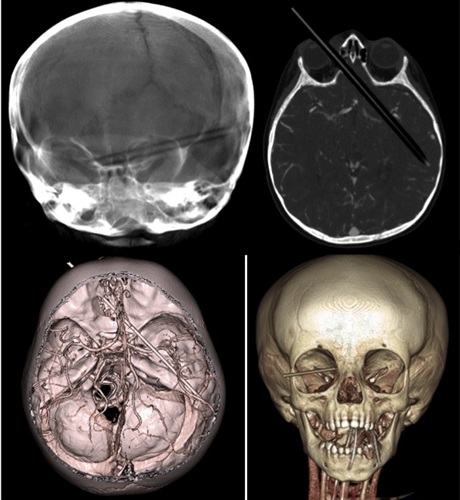Great story, worth sharing.
A New Hampshire toddler who suffered a nightmarish injury when a pencil impaled her eye and became lodged in her head was saved by a remarkable turn of good fortune: The pencil that penetrated deep into her brain took a near-perfect path that left her virtually unscathed.
The pencil entered the eye socket, passed through the bottom of the brain’s right hemisphere, crossed the midline and went through most of the left hemisphere, stopping just short of her left ear, said Dr. Orbach the chief of interventional and neurointerventional radiology at Children’s.
Along its route, it managed to avoid important areas like the optic nerve, critical arteries and veins and other parts, that, if damaged, could have caused blindness, paralysis, devastating neurological damage, or death, Orbach said.
“It missed everything,” he said. “Almost any horrible outcome that you could imagine could have happened.”
While penetrating brain injuries usually cause bleeding that can be life threatening, a CT angiography scan done before the removal showed that in Olivia’s case, there was none, Orbach said.
“The CTA was probably the most remarkable scan I’ve ever seen,” he said. “If you follow the course of the pencil across the brain, the entire brain, it literally missed every major vessel in its path by millimeters.”
See the full story here.
The pencil entered the eye socket, passed through the bottom of the brain’s right hemisphere, crossed the midline and went through most of the left hemisphere, stopping just short of her left ear, said Dr. Orbach the chief of interventional and neurointerventional radiology at Children’s.
Along its route, it managed to avoid important areas like the optic nerve, critical arteries and veins and other parts, that, if damaged, could have caused blindness, paralysis, devastating neurological damage, or death, Orbach said.
“It missed everything,” he said. “Almost any horrible outcome that you could imagine could have happened.”
While penetrating brain injuries usually cause bleeding that can be life threatening, a CT angiography scan done before the removal showed that in Olivia’s case, there was none, Orbach said.
“The CTA was probably the most remarkable scan I’ve ever seen,” he said. “If you follow the course of the pencil across the brain, the entire brain, it literally missed every major vessel in its path by millimeters.”
See the full story here.



